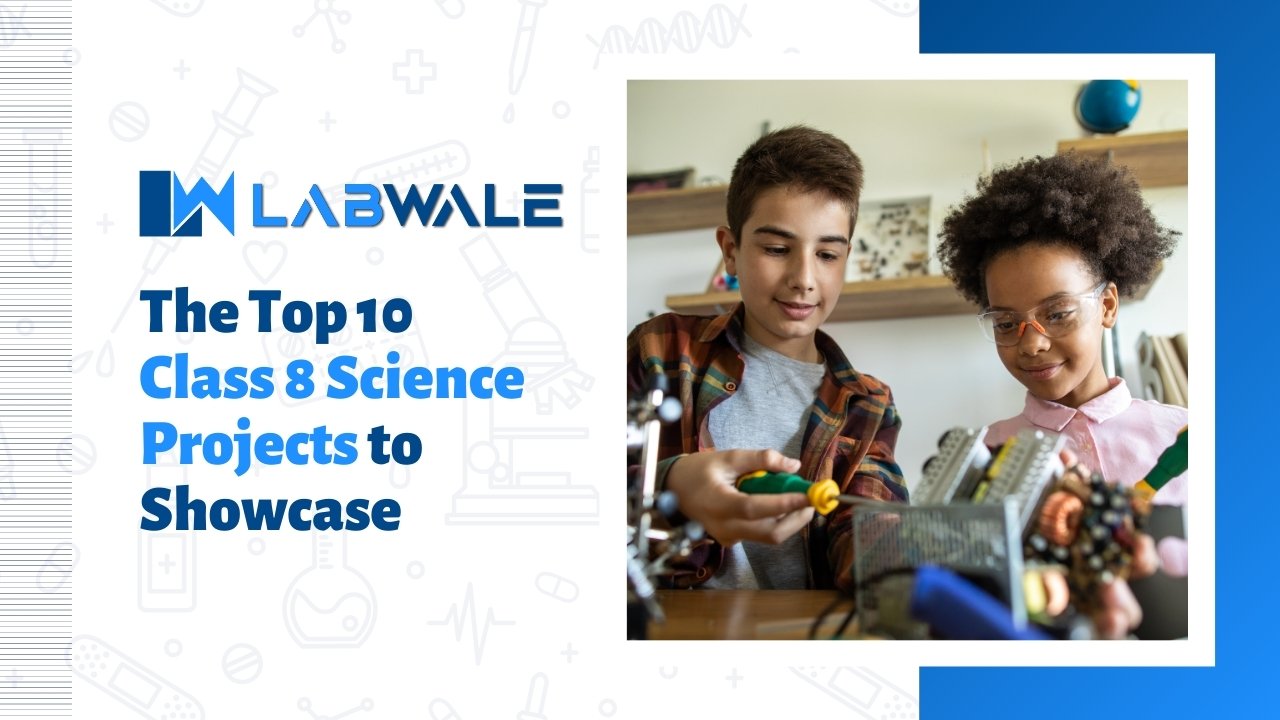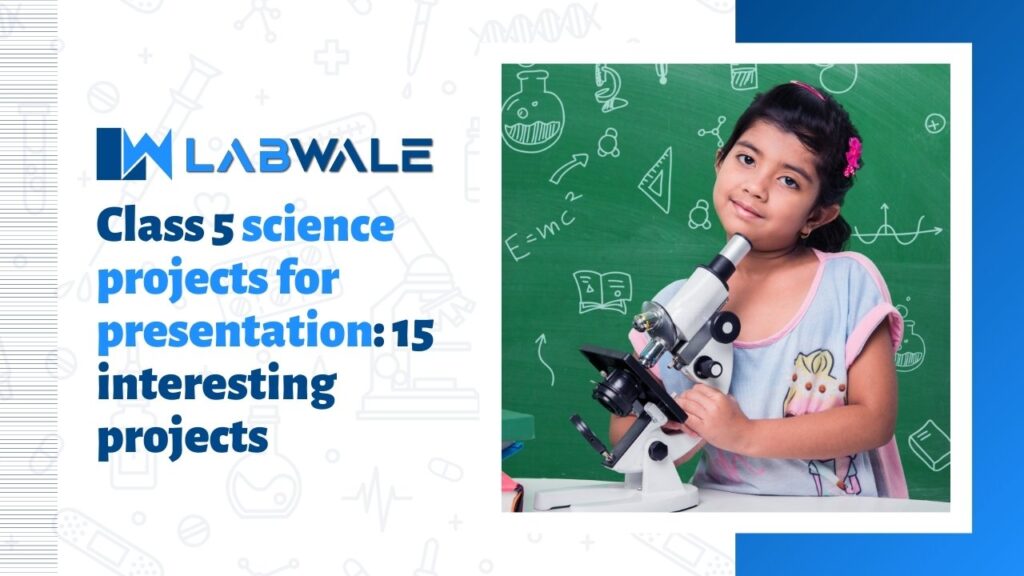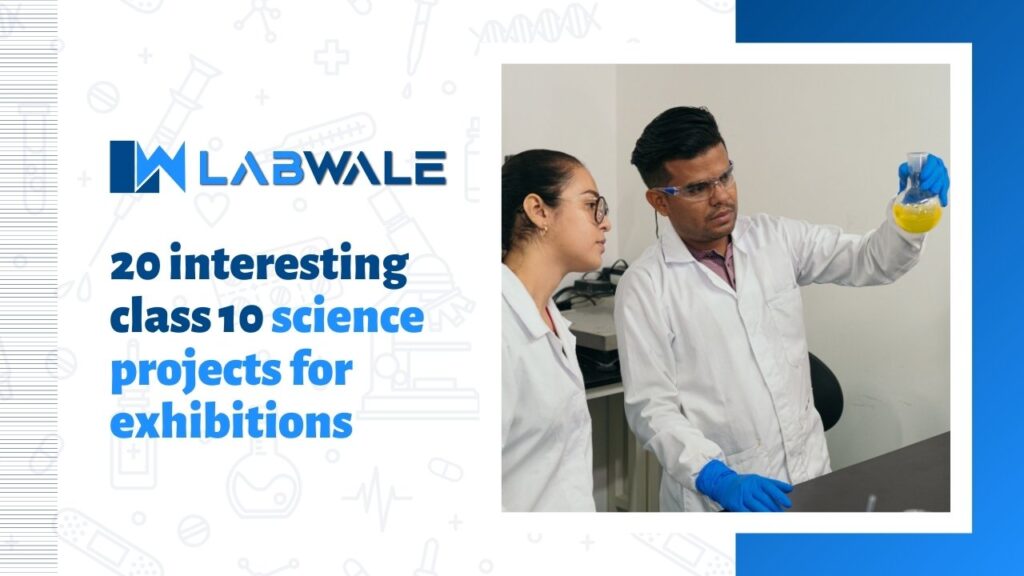-
-
 Cardiology
Cardiology
-
 Clinical Oncology
Clinical Oncology
-
 Dental
Dental
-
 Dermatology
Dermatology
-
 Ear, Nose, Throat (ENT)
Ear, Nose, Throat (ENT)
-
 Endocrinology
Endocrinology
-
 Gastroenterology
Gastroenterology
-
 General Surgery
General Surgery
-
 Gynecology & Obstetrics
Gynecology & Obstetrics
-
 Interventional Cardiology
Interventional Cardiology
-
 Nephrology
Nephrology
-
 Neurology
Neurology
-
 Oncology Surgery
Oncology Surgery
-
 Ophthalmology
Ophthalmology
-
 Orthopedics
Orthopedics
-
 Pediatrics
Pediatrics
-
 Pediatrics Surgery
Pediatrics Surgery
-
 Physiotherapy
Physiotherapy
-
 Plastic Surgery
Plastic Surgery
-
 Psychiatry & Psychology
Psychiatry & Psychology
-
 Radiology
Radiology
-
 Urology
Urology
-
 Vascular Surgery
Vascular Surgery
-
The Top 10 Class 8 Science Projects to Showcase

Contents
- List of Class 8 Science Projects
- 1. Build a Lightbulb
- 2. Design a Robotic Hand
- 3. Compare Electrolyte in Sports Drinks
- 4. Measure Algae Growth
- 5. First Law of Motion
- 6. Assemble Newton’s Cradle
- 7. Blow Candle with a Balloon
- 8. Relight a Candle Without Touching
- 9. Identify Strength of Interleaved Paper
- 10. Generate a Lichtenberg Figure
- Final Words
As a science teacher, you know that showing students real-world examples of scientific experiments is the best way to engage them in learning new concepts. Here are 10 science projects that you can use in your class 8 science projects classroom to show off your teaching skills and engage your students!
List of Class 8 Science Projects
1. Build a Lightbulb
There are many science projects that can be showcased in a class. One project that is easy to do and can be quite informative is to build a lightbulb. This is a project that can be completed in a few minutes and can provide students with an understanding of how electricity works.
Another popular science project is to make a model of something complex, like the human body. This project can take hours or even days, but it will provide students with an in-depth understanding of the subject. It is also possible to make models of plants or animals, which are both fun and educational.
Whatever science project you choose, make sure that it is one that your classmates would be interested in and willing to participate in. By choosing a project that interests them, you will ensure that the class session will be enjoyable for everyone.
2. Design a Robotic Hand
A robotic hand can help disabled people to perform everyday tasks.
Robotic hands have many applications, including in the manufacturing industry. They can be used to create products that are difficult or impossible to make with a human hand.
One of the most popular robotic hands is the prosthetic hand known as Biggio. This hand was designed by Dr. Rocco Biggio and is made by the company Touch Bionics. Biggio is a prosthetic hand that can be controlled with a joystick. It has three fingers and a thumb and can be used to perform common tasks, such as picking up objects and giving presentations.
Designing a robotic hand can be an interesting science project for students in elementary school or high school. By studying how different types of robotic hands work, students can develop ideas for their own designs.
3. Compare Electrolyte in Sports Drinks
One of the most important things students learn in science is how to compare and contrast different scientific concepts. One way to do this is by comparing electrolytes in sports drinks.
Electrolytes are essential nutrients that help the body maintain fluid balance and perform other important functions. Sports drinks contain electrolytes like sodium, potassium, magnesium, and calcium. These drinks are especially important for athletes because they help them replenish lost fluids and electrolytes during exercise.
When it comes to sports drinks, there are a few key things to consider.
First, sports drinks should have a high level of sodium. This is because sodium helps to preserve water and prevent dehydration.
Second, sports drinks should have a low level of potassium. This is because too much potassium can be dangerous and lead to muscle cramps and seizures.
Third, sports drinks should have a balanced level of magnesium and calcium. This is because magnesium and calcium help to keep muscle cells functioning properly and protect against bone fractures.
By understanding how electrolytes work in sports drinks, students can compare and contrast them in class. This will help them learn how to analyze scientific concepts critically.
4. Measure Algae Growth
Algae are an essential part of the marine ecosystem, and can be used to produce biofuels and bioproducts. Science projects that measure algae growth can be a fun way to show students how science works.
One simple science project to measure algae growth is to set up a growth chamber and track the number of algae over time. This project can also be used to compare the growth rates of different strains of algae.
Another fun science project to showcase in class is to create a bio filter using algae. This project can help students learn about waste water treatment processes, as well as microbiology. By filtering wastewater using algae, students can learn about which pollutants are removed by the bacteria, and which ones are not.
5. First Law of Motion
The first law of motion is the law of inertia, which states that an object at rest will remain at rest and an object in motion will continue in motion with a constant speed and direction.
This law can be used to explain why objects stay in their places when we move them around. For example, when you move a chair across the room, it stays where you put it because the chair is being held by the inertia of the surrounding objects.
You can also use this law to predict how things will behave in future situations. For example, if you drop a rock into a pool of water, you can expect the rock to sink to the bottom because the water is acting as a physical force on it.
The second law of motion is Newton’s second law of motion, which states that the strength of a physical force is proportional to the mass of the object being moved and inversely proportional to the square of the distance between the objects.
This law explains why large objects (like cars) are harder to move than small objects (like rocks). It also helps us to predict how things will behave in future situations by telling us how powerful various forces are.
6. Assemble Newton’s Cradle
One of the most interesting science projects that can be done in class is to assemble Newton’s Cradle. This project is a great way to show students how gravity works and how objects move.
To do this project, students will need to gather a few items. They will need a wooden dowel, an egg, some thread, and a compass. The first step is to put the dowel in the egg so that it balances on one end. Then, they will need to tie the thread around the dowel so that it hangs down. Finally, they will need to place the compass on top of the thread and adjust it until it points north. Now all they have to do is wait for the egg to fall off the dowel.
This project is a lot of fun and is a great way to teach students about science. It’s also a great way to show them how gravity works and how objects move.
7. Blow Candle with a Balloon
One of the most popular science projects to showcase in class is blowing a candle with a balloon. This project is easy to do and can be done with just a few supplies.
To begin, cut a small hole in the bottom of the balloon. Once the hole is cut, tie the balloon so that it is slightly inflated. Next, light the candle inside the balloon and wait until the candle has burned down to about half its size. Once the candle has been blown out, remove it from the balloon by pulling on one of the ends.
8. Relight a Candle Without Touching
There are many science projects that can be done to showcase in class. One of the top science projects to show off is the ability to relight a candle without touching it. This project requires the use of a battery, some common household items, and a little bit of patience.
To begin, the student needs to gather all the necessary materials. They will need a battery, a candle, a match, and some salt.
Next, the student must find a place where they can safely light the candle without being disturbed. The best place to do this is usually in a dark room.
Once the candle is lit, the student needs to wait until the match has burned down to half its length before blowing it out.
Next, the student must take the salt and place it on top of the flame on the candle. Once the salt has melted, the student will be able to blow out the flame with little effort.
9. Identify Strength of Interleaved Paper
Interleaved paper is a type of paper that has a number of small pieces of paper sandwiched between two larger pieces of paper. This type of paper is often used in scientific experiments because it is strong and can resist tears.
One common science project that uses interleaved paper is the measurement of strength. Scientists use interleaved paper to measure the strength of materials like rubber and metal. By measuring the force required to tear the paper, scientists can learn about the properties of those materials.
Another common science project that uses interleaved paper is the study of fluids. Scientists often use interleaved paper to study how fluids move through tubes and other vessels. By studying how the fluids move, scientists can learn about their properties and how they interact with each other.
10. Generate a Lichtenberg Figure
One of the most popular science projects to showcase in class is generating a Lichtenberg figure. This is a type of image that uses light and shadow to create a three-dimensional effect.
To create a Lichtenberg figure, you will need several pieces of equipment. First, you will need a light source and a white surface to project the image onto. You can use an overhead projector or a light box. Next, you will need a black piece of paper to create the shadow. Finally, you will need a camera or another device to capture the image.
The process of generating a Lichtenberg figure is simple but can be tricky to perfect. You will need to experiment with different settings and see what produces the best results. If you are new to this type of project, there are many online resources that can help guide you through the process.
Final Words
To conclude this article, I would like to mention some of the best science projects that you can use to showcase your scientific knowledge in class.
One project that is perfect for high school students is a lab experiment that shows the effects of heat on a liquid. This project can be done in a chemistry class, for example, and it will show your students how heat can change the behavior of a liquid.
Another great project for high school students is a lab experiment that demonstrates the effects of light on plants. This project could be done in a biology class, for example, and it will show your students how light can affect plant growth.
Finally, another great science project for high school students is a lab experiment that demonstrates the effect of gravity on objects. This project could be done in physics or math classes, for example, and it will show your students how gravity affects different objects.


 Anatomy Lab Equipments
Anatomy Lab Equipments
 Biochemistry Lab Equipments
Biochemistry Lab Equipments
 Biology Lab Equipments
Biology Lab Equipments
 Chemistry Lab Equipments
Chemistry Lab Equipments
 Cytology Lab Equipments
Cytology Lab Equipments
 Cytopathology Lab Equipments
Cytopathology Lab Equipments
 Dental Lab Equipments
Dental Lab Equipments
 Forensic Lab Equipments
Forensic Lab Equipments
 Genetics Lab Equipments
Genetics Lab Equipments
 Hematology Lab Equipments
Hematology Lab Equipments
 Histology Lab Equipments
Histology Lab Equipments
 Histopathology Lab Equipments
Histopathology Lab Equipments
 Mathematics Lab Equipments
Mathematics Lab Equipments
 Microbiology Lab Equipments
Microbiology Lab Equipments
 Molecular Biology Lab Equipments
Molecular Biology Lab Equipments
 Pathology Lab Equipments
Pathology Lab Equipments
 Pharmaceutical Lab Equipments
Pharmaceutical Lab Equipments
 Physics Lab Equipments
Physics Lab Equipments
 Radiology Lab Equipments
Radiology Lab Equipments
 Science Lab Kit’s
Science Lab Kit’s
 Toxicology Lab Equipments
Toxicology Lab Equipments

 Borosilicate Glass Beaker
Borosilicate Glass Beaker
 Plastic Beaker (Euro Design)
Plastic Beaker (Euro Design)
 Plastic Beaker (Printed Graduation)
Plastic Beaker (Printed Graduation)
 Test Tube Brush
Test Tube Brush
 Measuring Cylinder Brush
Measuring Cylinder Brush
 Conical Flask Brush
Conical Flask Brush
 Volumetric Flask Brush
Volumetric Flask Brush
 Round Bottom Flask Brush
Round Bottom Flask Brush
 Glass Beaker Brush
Glass Beaker Brush
 Pipette Brush
Pipette Brush
 Wash Bottle Brush
Wash Bottle Brush
 Borosilicate Büchner Flask
Borosilicate Büchner Flask
 Borosilicate Erlenmeyer/Conical Flask
Borosilicate Erlenmeyer/Conical Flask
 Borosilicate Pear-Shaped Flask
Borosilicate Pear-Shaped Flask
 Borosilicate Round Bottom Flask
Borosilicate Round Bottom Flask
 Plastic Conical Flask
Plastic Conical Flask
 Plastic Volumetric Flask
Plastic Volumetric Flask
 Bunsen Burner
Bunsen Burner
 Spirit Lamp
Spirit Lamp
 Borosilicate Glass Burette
Borosilicate Glass Burette
 Plastic Burette
Plastic Burette
 Capillary Tube
Capillary Tube
 Centrifuge Tube
Centrifuge Tube
 Test Tube
Test Tube
 Ria Vial
Ria Vial
 Vacutainer Tubes
Vacutainer Tubes
 Syringes
Syringes
 Student Microscope
Student Microscope
 Binocular Microscope
Binocular Microscope
 Dissecting Microscope
Dissecting Microscope
 Microscope Glass Slides
Microscope Glass Slides
 Cover Slip
Cover Slip
 Inoculating Loop
Inoculating Loop
 Slide Box
Slide Box
 Lamps
Lamps
 Oils
Oils
 Beaker Tongs
Beaker Tongs
 Crucible Tongs
Crucible Tongs
 Flask Tongs
Flask Tongs
 Borosilicate Glass Funnel
Borosilicate Glass Funnel
 Plastic Funnels
Plastic Funnels
 Wash Bottle
Wash Bottle
 Borosilicate Glass Reagent Bottle
Borosilicate Glass Reagent Bottle
 Plastic Reagent Bottle
Plastic Reagent Bottle
 Borosilicate Measuring Cylinder
Borosilicate Measuring Cylinder
 Plastic Measuring Cylinder
Plastic Measuring Cylinder
 Borosilicate Glass Graduated Pipette
Borosilicate Glass Graduated Pipette
 Borosilicate Glass Volumetric Pipette
Borosilicate Glass Volumetric Pipette
 HB Pipette
HB Pipette
 Pasteur Pipette
Pasteur Pipette
 Micropipettes
Micropipettes
 Micropipette Tips
Micropipette Tips
 Filter Paper
Filter Paper
 Litmus Paper
Litmus Paper
 pH Paper
pH Paper
 Chromatography Paper
Chromatography Paper
 Plastic Petri Plates (Sterile)
Plastic Petri Plates (Sterile)
 Glass Petri Plates (Non-Sterile)
Glass Petri Plates (Non-Sterile)
 Safety Goggles
Safety Goggles
 Lab Coats
Lab Coats
 Gloves
Gloves
 Masks
Masks
 Shoe Covers
Shoe Covers
 Hair & Beard Covers
Hair & Beard Covers
 Steel Spatula
Steel Spatula
 Plastic Spatula
Plastic Spatula
 Hitachi Sample Cup
Hitachi Sample Cup
 Plastic Scoop
Plastic Scoop
 Plastic Medicine Cup
Plastic Medicine Cup
 Dissecting Tool Kit
Dissecting Tool Kit
 Dissecting Forceps
Dissecting Forceps
 Hemostatic Forceps
Hemostatic Forceps
 Thumb Forceps / Tweezers
Thumb Forceps / Tweezers
 Blood Culture Bottle
Blood Culture Bottle
 Urine Container
Urine Container
 Wooden Swab Stick
Wooden Swab Stick
 Test Tube Holder
Test Tube Holder
 Test Tube Racks
Test Tube Racks
 Magnifying Glass
Magnifying Glass
 Watch Glass
Watch Glass
 Mortar and Pestle
Mortar and Pestle
 Coplin Jar
Coplin Jar
 Plastic Stirrer
Plastic Stirrer
 Glass Stirrer
Glass Stirrer
 Crucible
Crucible
 Tripod
Tripod
 Wire Mesh
Wire Mesh
 Laboratory Thermometer
Laboratory Thermometer
 Tourniquet
Tourniquet
 Alcohol Swab
Alcohol Swab
 Blood Lancet
Blood Lancet
 Bandage
Bandage
 Gloves & Masks
Gloves & Masks










 Cardiology
Cardiology Clinical Oncology
Clinical Oncology






